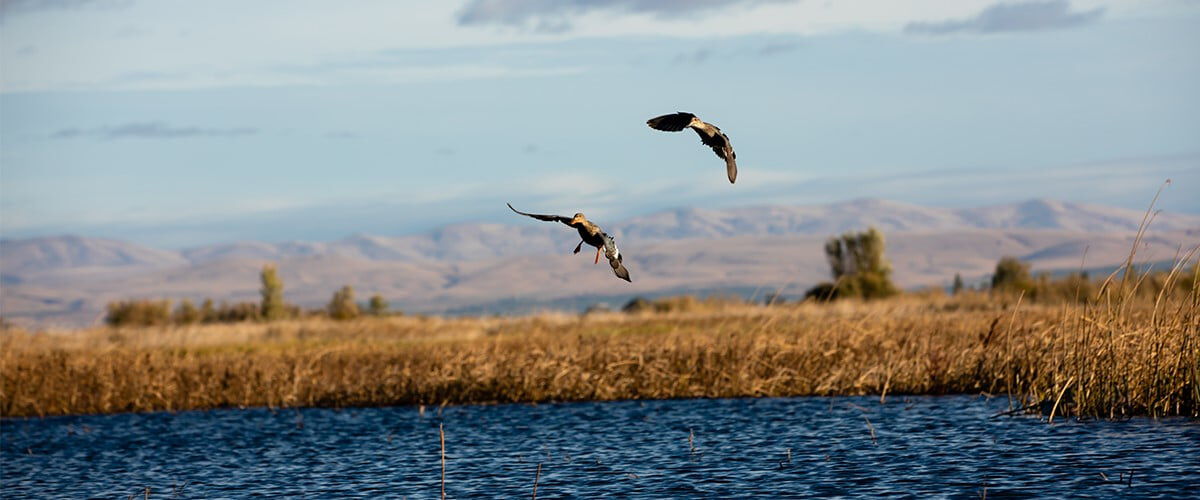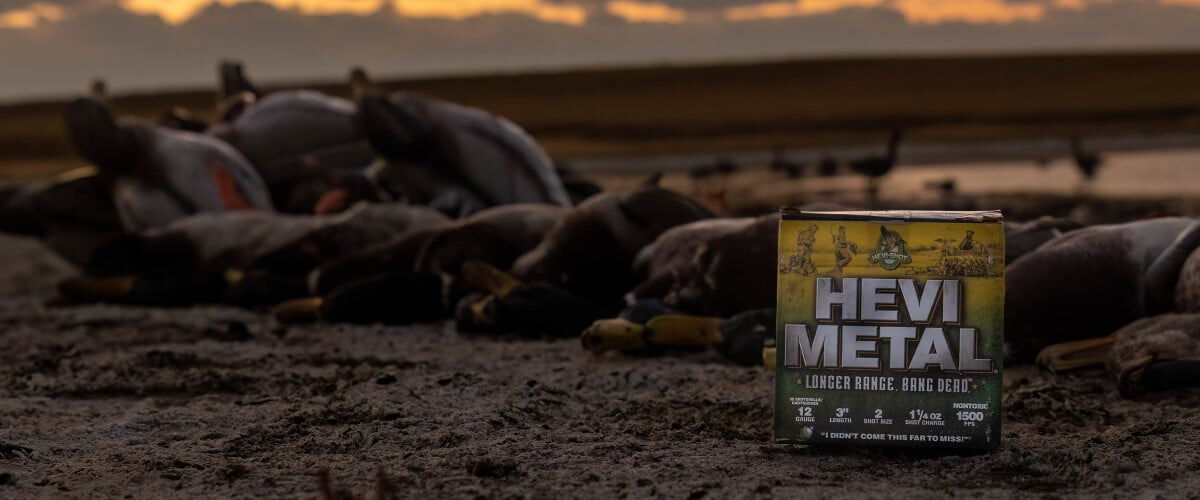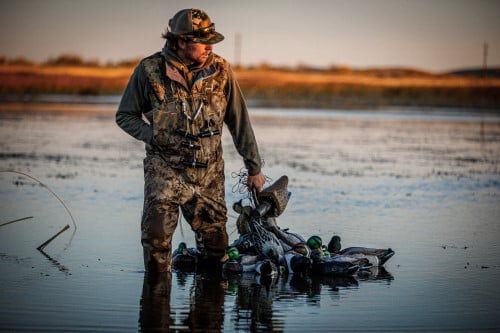
It’s the plight of the working-class duck hunter to play the guessing game when it comes to booking a duck hunting trip. All you can do is pick dates when the hunting is typically good and pray for the best. This year I rolled the dice with my vacation days on hunting the mountainous landscape of Montana. Unfortunately, Mother Nature doesn’t care about my work calendar, and temps were around 75 degrees when they would normally be 50 at the highest.
I knew it was going to be a tough trip, and my drive from southern Washington confirmed it. The skies were empty. Mallards are usually my best indicator for the migration, and they simply weren’t there. So, what do you do when you’ve taken a week off work and there’s no birds?
My first thought was to check the refuge. Refuges are a good spot for local birds and usually a first stop for migrators. I found a few ducks, but not enough for a good hunt. I knew my only option was to put in some extra windshield time. I checked all my known spots both morning and night. Two full days of scouting and we found nothing. I expanded my search to new areas, and as I crept further north, I began to see signs of migration; a group of snow geese here, mallards hitting fields there, and a few ponds with green heads in full plume. Even though the push may be small, if you find birds, you can work with them for a while.
On the afternoon of the third day, we drove past a ditch we’d checked 20 times before. This time there were about 200 mallards in it. As I approached, I could hear ducks stretched out across a mile. I sat in my truck and watched as the skies lit up like I hadn’t seen all season. Thousands of mallards, all coming from the north, to join the thousands already in the ditch.

Because we were there before the migration, I learned something that day. I learned that this ditch was one of the first stopping places for migrating birds. Now, that’s the first place I’ll look when numbers are low. By watching the birds, I learned that when it’s warm they leave early in the morning to feed, return to the roost, and then hit another feed late in the afternoon (sometimes after shooting light). Birds that fed in the field were fast and furious for about an hour. Feeds in water lasted until about noon.
I had a great week of hunting from this one small push, and I learned a lot in the process. So next time warm temps slow the migration and threaten your hunt, try the following:
- Check the refuge.
- Put in the scouting time
- Don’t give up. You never know when a new push of birds can start.
- Birds still migrate, even when it’s hot.
- Scout your spots in both morning and afternoon. Check them every day.
- Hunt the mornings when it’s warm.
- Try to hunt water for a longer hunt.
If all else fails, pack some reliable shells (I was packing HEVI-Metal Longer Range this trip), and do your best to make every shot count. Even when it’s slow, it’s still worth going.

About the Author
Beau Brooks is a professional photographer and outdoorsman at Higdon Outdoors. For more from Beau, you can follow him on Instagram @beauhunter66 and on TikTok @beaubrooks7.
HEVI-Metal Longer Range
HEVI-Metal Longer Range is all about more pellets on target at longer range. We aren’t talking about "sky-busting," we are talking about your buddy crippling a bird and it sailing across the lake… you will have confidence in your HEVI-Metal Longer Range to knock that bird out of the sky. The 30% layer of bismuth is one shot size smaller than the 70% steel. This ensures both layers have equal downrange performance.
Buy Now